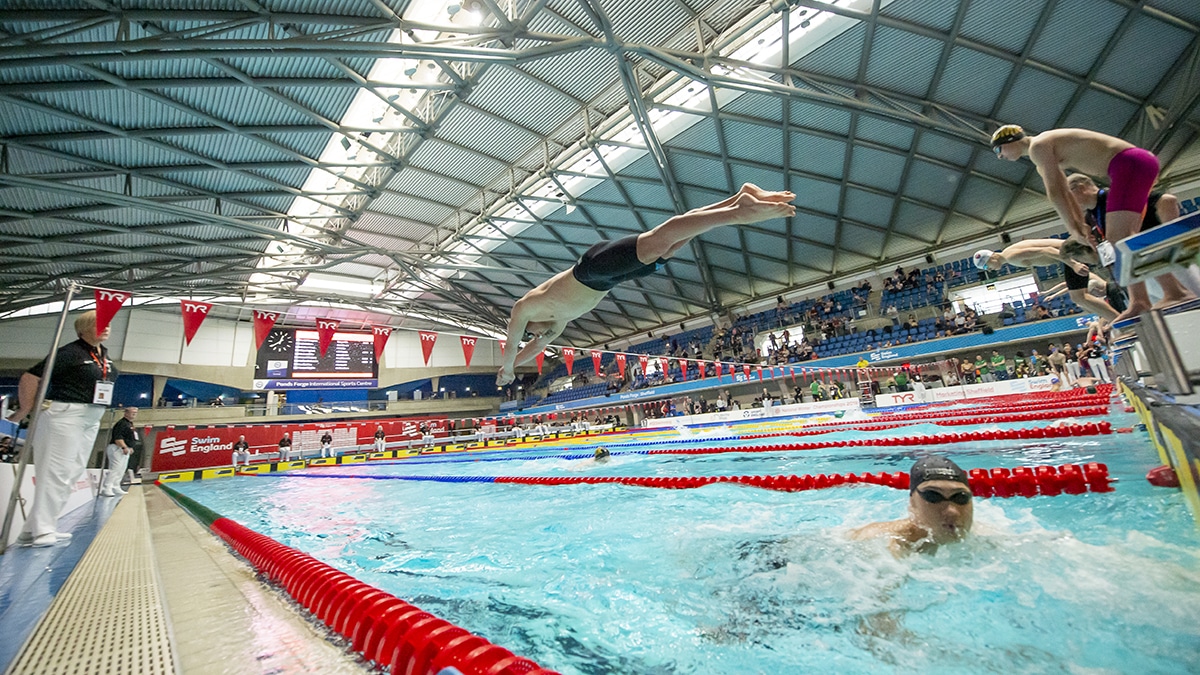
Ask the Expert: James Clark on relay takeover techniques
January 19, 2019What are the best relay takeovers to help give my swimming club’s relay teams an advantage in races?
The takeover plays an integral part of the relay process involving the changeover from one swimmer to the next.
The rules dictate that the starting swimmer must be in contact with the starting platform whilst the preceding swimmer is in contact with the starting wall.
This allows for a very creative part of the swim as there are no rules on motion, foot position or stance position.
Over the years, many different and creative styles have been adopted.
However, there still seems to be a large gap in the adoption of these very powerful movements that almost guarantee speed off the block.
Here we look at the various takeovers that have been used over the years.
Swing ’n go
Possibly the most basic of the four takeovers.
Go back 10 years and this was still being used by elite swimmers at the Beijing 2008 Olympics.
The takeover requires the athlete to position themselves with both feet at the front of the block and to follow the preceding swimmer into the wall with both hands.
Just before the swimmer touches the wall, the arms swing back and forward again in an attempt to propel the swimmer into the water.
No change of body position, no inertia and no use of the size of the block.
Single step arm swing
This takeover uses both the relatively large block size and an element of momentum gained from the arms.
This takeover starts in a track start position and with the arms outstretched forwards.
Just before the swimmer touches the wall, the arms do a full 360° backward swing, the back foot steps forward for the body to follow the arms and the legs push to drive the momentum into the water.
This takeover is very much at the peak of popularity among swimmers due to its ease of use and convenience with most swimmers using the track start anyway.
Unfortunately, whilst many swimmers may seem to think there is a level of momentum being gained from the arms, in reality there isn’t.
There is no real change of body position as many swimmers still start with their body over the foot of the block, giving no change of weight distribution and minimal momentum when they follow their arms off the block.
A good start but most of the time poorly executed by many high-ranking swimmers.
Double step arm swing
This is the first of our starts to actually use the body’s position as an effective way of creating momentum.
This time, both feet are positioned at the back of the block with the body’s weight being put away from the edge.
Just before the swimmer touches the wall, the arms swing backwards simultaneously with the feet either jumping forward or taking a two-step pattern to the edge of the block and into the water.
The change of body position creates a moving forward motion even before the swimmer has entered the water and therefore gains a massive advantage.
Equally, the arms create momentum for the body to follow into the water and even more speed for the athlete to use moving into the swim.
The step over
The step over is the newest of the takeovers and, at this moment in time, probably the most effective in its transfer of energy into the water.
The swimmer starts by positioning the block wedge as far forward as it can go.
One foot is placed immediately behind the wedge with the other foot resting on the top of it.
As the swimmer touches the wall, the foot behind the wedge steps over the wedge to the front of the block and, following the 360° swing by the arms, creates a change of body position large enough for the swimmer to use as energy into the water.
Done correctly, this takeover creates a huge amount of force off the block and incorporates all the important factors that make a good takeover worthwhile.
The takeover uses the full stretch of the block meaning a large amount of body weight can be used to drive the swimmer forward.
The arm swing also aids in stability and momentum to assist the swimmer’s momentum.
Our expert
James Clark is a former volunteer coach at Loughborough University. He studied for a Masters degree in exercise physiology. He was also a swimmer at Bath University, while completing his undergraduate studies in sports performance.
This article first appeared in the November-December 2018 edition of Swimming Times
 Swim England Competitive Swimming Hub
Swim England Competitive Swimming Hub